BASEMENT WATERPROOFING



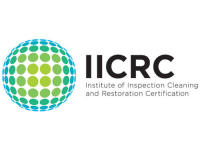
Signs of Water Damage in Your Basement?
Some of the most common signs of basement water damage include:
Cracks in the Foundation
It causes the foundation to move, deteriorate, and break down when water reaches your basement. As a result, in the walls, floors, and ceiling, cracks form. In addition, while a sign of age may be flaking or peeling paint and wallpaper, it may also be a sign of water damage.
Mould & Mildew
For mold and mildew to flourish, a wet basement is the ideal habitat. If you find fungus or mildew in your basement, there’s a fair chance that your methods of waterproofing the basement will not work properly.
Unpleasant Odour
Odd smells that linger for a long time are typically a sign of moisture in your basement. To determine the cause of the problem, if you notice a bad smell coming from your basement along with other signs of a wet basement, you can contact a waterproofing expert.
Stains
An sign of a water leak in the basement is the yellowish-brown stains on the walls, roof, and flooring. Although stains like these can be painted over and patched on the outside, they may be the product of your property’s larger water issues.
It's important for any homeowner to be acquainted with the symptoms of a leaky basement. It's time for the next move now that you've heard about the signs of water damage to your house.
We urge homeowners to inform themselves about waterproofing solutions that are available. This way, in terms of process, criteria, recommendations, and value, they know what to expect.
BASEMENT WATERPROOFING EXPERTS
For properties in Toronto and the surrounding areas, basement waterproofing is very necessary. Many homeowners, after heavy rain, find themselves struggling with water coming up through their basement floor. Some also face a basement that's flooded. This event is natural, of course, for badly designed basements, but it doesn't have to be. Putting an end to a wet basement begins with adequate waterproofing of the basement.
Basement Waterproofing Methods
For the most part, basement waterproofing can be done either on the inside of your property or on the outside:
External Waterproofing
- Foundation Waterproofing
- Foundation Damp Proofing
- Exterior Weeping Tiles
Interior Waterproofing
- Primary Sump Pump
- Backup Sump Pump
- Internal Weeping Tiles
External Waterproofing
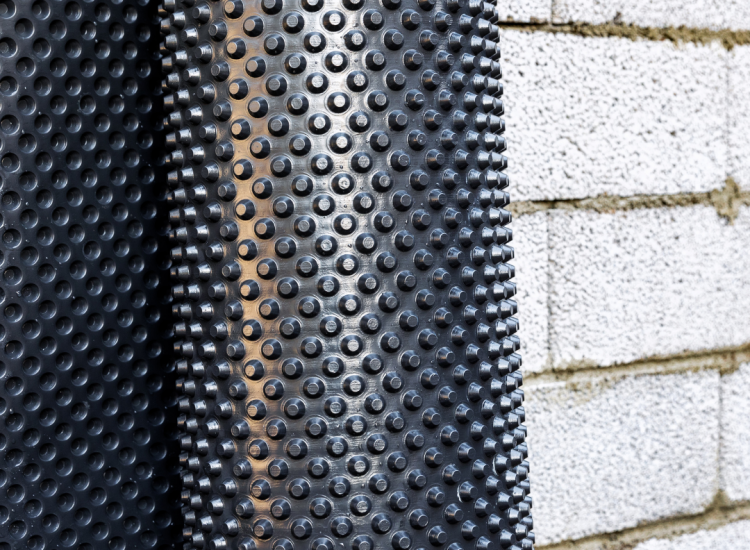
Foundation Waterproofing
Waterproofing is one of the most effective strategies because it does not only stop water from entering the foundation; for additional protection, it also seals any gaps or pores in the concrete.
We add a tar or rubber coating film to seal the concrete slabs and walls in the house when we waterproof the base in a cellar. We create a barrier strong enough to withstand hydrostatic pressure resulting from poor drainage by doing this.
Foundation Damp Proofing
Damp proofing is a technique that uses the base of the house on the exterior with an asphalt-based coat. We either spray this coat or apply it by hand to the property’s exterior walls, forming a barrier that protects them from external humidity.
It is not as effective as waterproofing, while damp proofing is a viable waterproofing choice, simply because it does not seal wide cracks in concrete walls or slabs. This alone renders damp proofing inadequate, and it also needs additional waterproofing methods to operate properly.
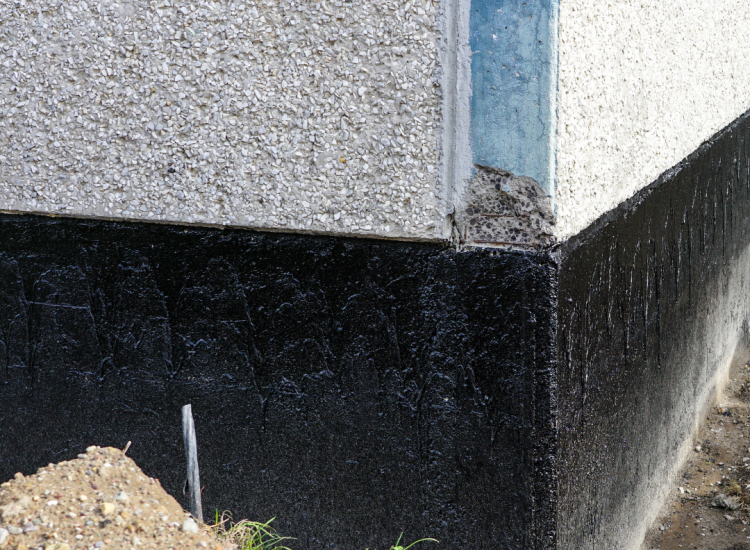
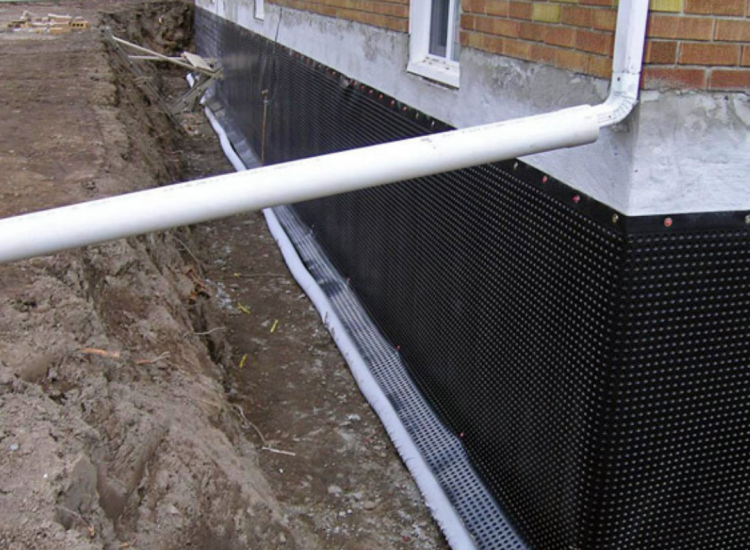
External Weeping Tiles
Weeping tiles are plastic pipes that we mount, 75mm deep underground, along the perimeter of the basement walls. By diverting water away from your house, they protect your basement from flooding. By using a sloped installation technique, the way external weeping tiles work is by filtering excess water through the pipe and out of your building.
Internal Waterproofing
Any procedure performed or built inside the house refers to this form of waterproofing. In various cases, it is typically mounted as an alternative to exterior waterproofing. When exterior waterproofing is too costly or impractical, interior installation of the foundation water barrier is widely used. This could be due to concrete walkways across the perimeter of the construction, greater chance of destroying the base and digging walls, etc.
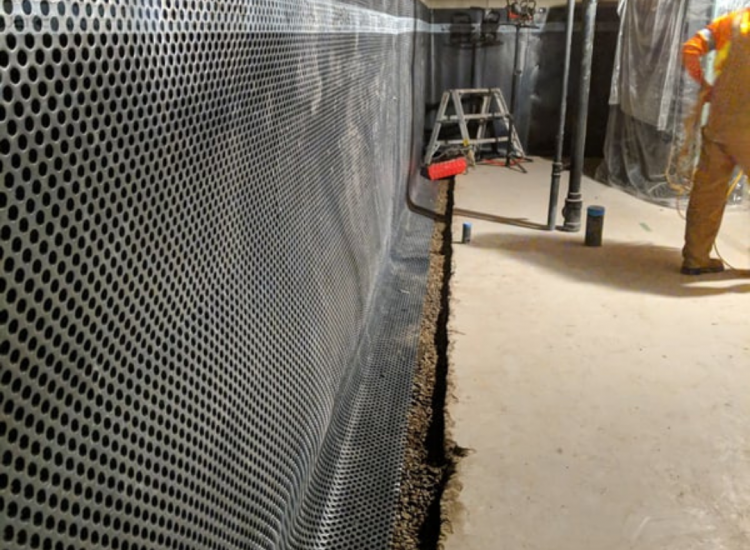
Internal waterproofing also includes:
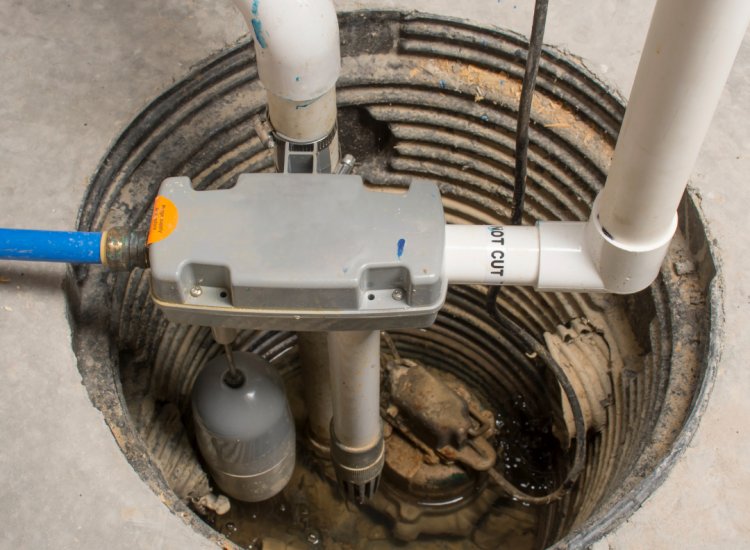
Sump Pumps
In order to protect them from dampness and rain, a sump pump is a mechanism that we install in basements. Typically, sump pumps stand in 2-foot deep sump pits that absorb water as it passes through the soil or through the drains of the building. The pump is triggered automatically using a sensor when water collects in the sump pit. The pump then pushes the water from the house away from your basement through a drain pipe.
For waterproofing, sump pumps are efficient, but are bound to malfunction. This is why, in case your primary one stops working, we suggest installing a backup sump pump.
Internal Weeping Tiles
We mount internal weeping tiles under the basement flooring on the inside perimeter of the building. The internal weeping tiles are made of porous plastic which filters excess water, similar to weeping tiles on the outside. However, the tiles attach to the sump pit in your basement instead of linking to the drainage system. The weeping tile works along with the sump pump to direct water out of the basement, shielding it from water damage.

